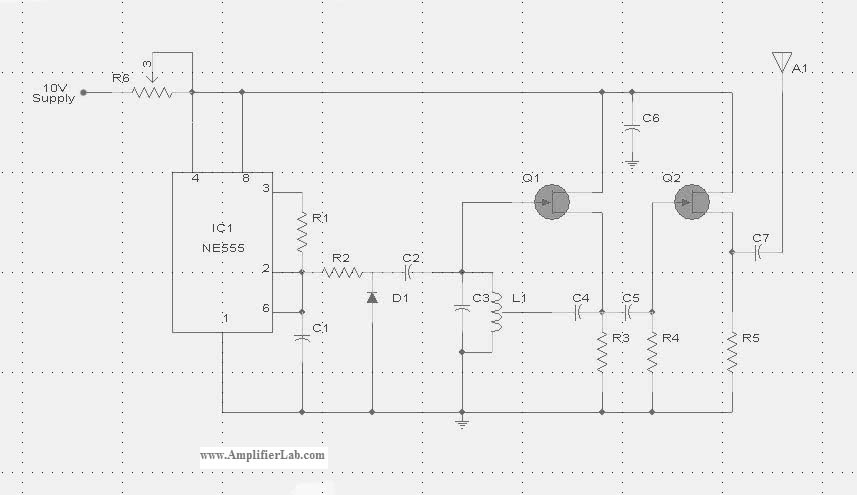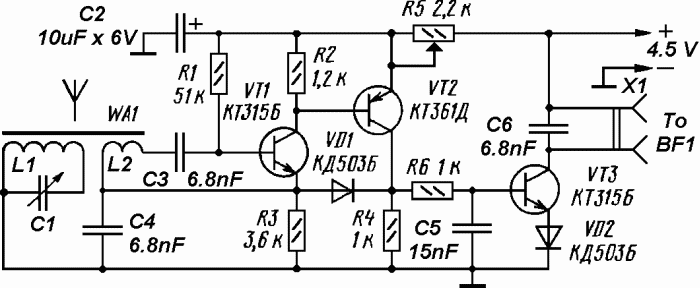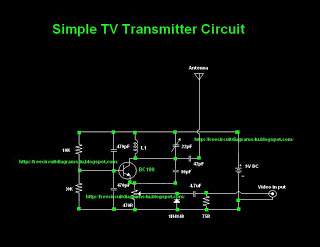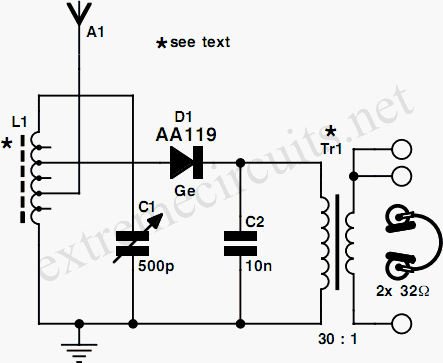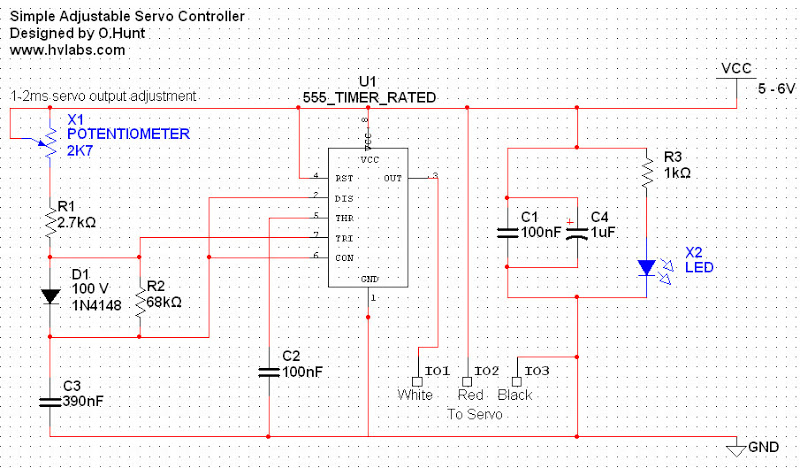
Simple Am Radio
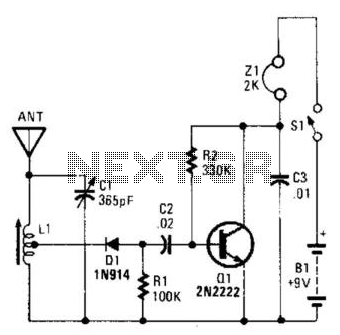
An AM radio can be constructed using a simple diode detector and an audio amplifier. A random length of wire typically serves as an antenna. LI is an adjustable ferrite loopstick similar to those used in transistor radios.
An AM radio receiver operates by demodulating amplitude-modulated signals to retrieve the audio information transmitted over radio waves. The core components include a diode detector, which rectifies the incoming RF signal, and an audio amplifier, which boosts the audio signal to a level suitable for driving a speaker or headphones.
The antenna, often made from a random length of wire, captures the electromagnetic waves. The effectiveness of the antenna can be enhanced by using an adjustable ferrite loopstick (LI), which is a common element in transistor radios. This loopstick acts as an inductor and is tuned to resonate at the desired frequency, improving the reception of the AM signal.
The diode detector is typically a simple semiconductor diode that allows current to flow in one direction, effectively rectifying the incoming RF signal. After rectification, the audio signal is extracted, which may require additional filtering to remove any remaining RF components. The audio amplifier then takes this signal and amplifies it to a level that can be output through a speaker.
The entire circuit can be powered by a low-voltage power supply, making it suitable for portable applications. Proper grounding and shielding techniques should be employed to minimize interference and enhance overall performance. The design can be further optimized by adjusting the loopstick and antenna length to achieve the best possible reception for various AM broadcast frequencies. An AM radio can be built of a simple diode detector and an audio amplifier. A random length of wire always serves as an ant enna. LI is an adjustable ferrite loopstick of the type used in transistor radios.
An AM radio receiver operates by demodulating amplitude-modulated signals to retrieve the audio information transmitted over radio waves. The core components include a diode detector, which rectifies the incoming RF signal, and an audio amplifier, which boosts the audio signal to a level suitable for driving a speaker or headphones.
The antenna, often made from a random length of wire, captures the electromagnetic waves. The effectiveness of the antenna can be enhanced by using an adjustable ferrite loopstick (LI), which is a common element in transistor radios. This loopstick acts as an inductor and is tuned to resonate at the desired frequency, improving the reception of the AM signal.
The diode detector is typically a simple semiconductor diode that allows current to flow in one direction, effectively rectifying the incoming RF signal. After rectification, the audio signal is extracted, which may require additional filtering to remove any remaining RF components. The audio amplifier then takes this signal and amplifies it to a level that can be output through a speaker.
The entire circuit can be powered by a low-voltage power supply, making it suitable for portable applications. Proper grounding and shielding techniques should be employed to minimize interference and enhance overall performance. The design can be further optimized by adjusting the loopstick and antenna length to achieve the best possible reception for various AM broadcast frequencies. An AM radio can be built of a simple diode detector and an audio amplifier. A random length of wire always serves as an ant enna. LI is an adjustable ferrite loopstick of the type used in transistor radios.
